Decoding the Structure and Basics of Conical Horn Lens Antenna
The Conical Horn Lens Antenna represents a sophisticated advancement in microwave engineering that combines the fundamental principles of conical horn structures with lens technology to achieve superior performance characteristics. This innovative design merges the inherent advantages of both components—the directional properties of the conical horn and the focusing capabilities of the lens—creating a highly efficient antenna system with remarkably low sidelobe levels and compact axial dimensions. Understanding the structural elements and operational basics of the Conical Horn Lens Antenna provides valuable insights into its widespread adoption across critical industries such as telecommunications, defense, aerospace, and navigation where precision signal transmission is paramount.
Fundamental Architecture and Design Principles of Conical Horn Lens Antennas
Core Structural Components
The Conical Horn Lens Antenna features a meticulously engineered architecture that combines two primary elements: a conical horn (or conical corrugated horn) and a plano-convex lens. The conical horn serves as the waveguide transition, gradually expanding to match impedance between the feedline and free space. This gradual expansion is crucial as it minimizes reflections and ensures efficient energy transfer. The horn's precise dimensions and taper angle are carefully calculated to optimize radiation patterns while maintaining structural integrity. Advanced Microwave Technologies Co., Ltd. manufactures these components with exceptional precision, ensuring each Conical Horn Lens Antenna delivers consistent performance across demanding applications. The integration of the plano-convex lens at the aperture transforms the spherical wavefront generated by the horn into a planar wavefront, significantly improving directionality and gain while maintaining the compact form factor that makes these antennas particularly valuable in space-constrained installations.
Electromagnetic Wave Propagation Mechanisms
The electromagnetic wave propagation through a Conical Horn Lens Antenna follows a sophisticated path that maximizes performance. Initially, the signal enters through the waveguide feed, where it transitions into the conical horn structure. As the electromagnetic waves propagate through the expanding horn section, they undergo controlled expansion that maintains phase coherence. This careful manipulation of the wavefront is essential for minimizing distortion and maximizing gain. When these waves reach the lens component of the Conical Horn Lens Antenna, they experience a precisely calculated refraction effect that transforms the spherical wavefront into a highly directional planar wavefront. Advanced Microwave's engineering expertise ensures this transition occurs with minimal reflection losses, achieving transmission efficiency significantly higher than conventional antenna designs. This propagation mechanism is particularly valuable in applications requiring pencil beams with low sidelobe characteristics, making these antennas ideal for precision radar systems and satellite communications where signal integrity is paramount.
Material Selection and Manufacturing Considerations
The performance of a Conical Horn Lens Antenna is heavily influenced by material selection and manufacturing precision. Advanced Microwave Technologies employs specialized dielectric materials for lens construction that exhibit minimal insertion loss while maintaining the precise dielectric constant required for optimal refraction. The conical horn components are typically fabricated from high-conductivity metals or metallized composites to minimize resistive losses. Manufacturing tolerances are maintained at extremely tight specifications—often within microns—as even small deviations can significantly impact the antenna's radiation pattern. Advanced Microwave's manufacturing facilities are equipped with state-of-the-art microwave measurement equipment capable of testing up to 110 GHz, ensuring each Conical Horn Lens Antenna meets rigorous performance standards. The company's ISO:9001:2008 certification and RoHS compliance demonstrate their commitment to quality manufacturing practices that deliver consistent, reliable performance across their entire product line. These manufacturing considerations are particularly important for applications in aerospace and defense sectors where environmental resilience and performance reliability cannot be compromised.
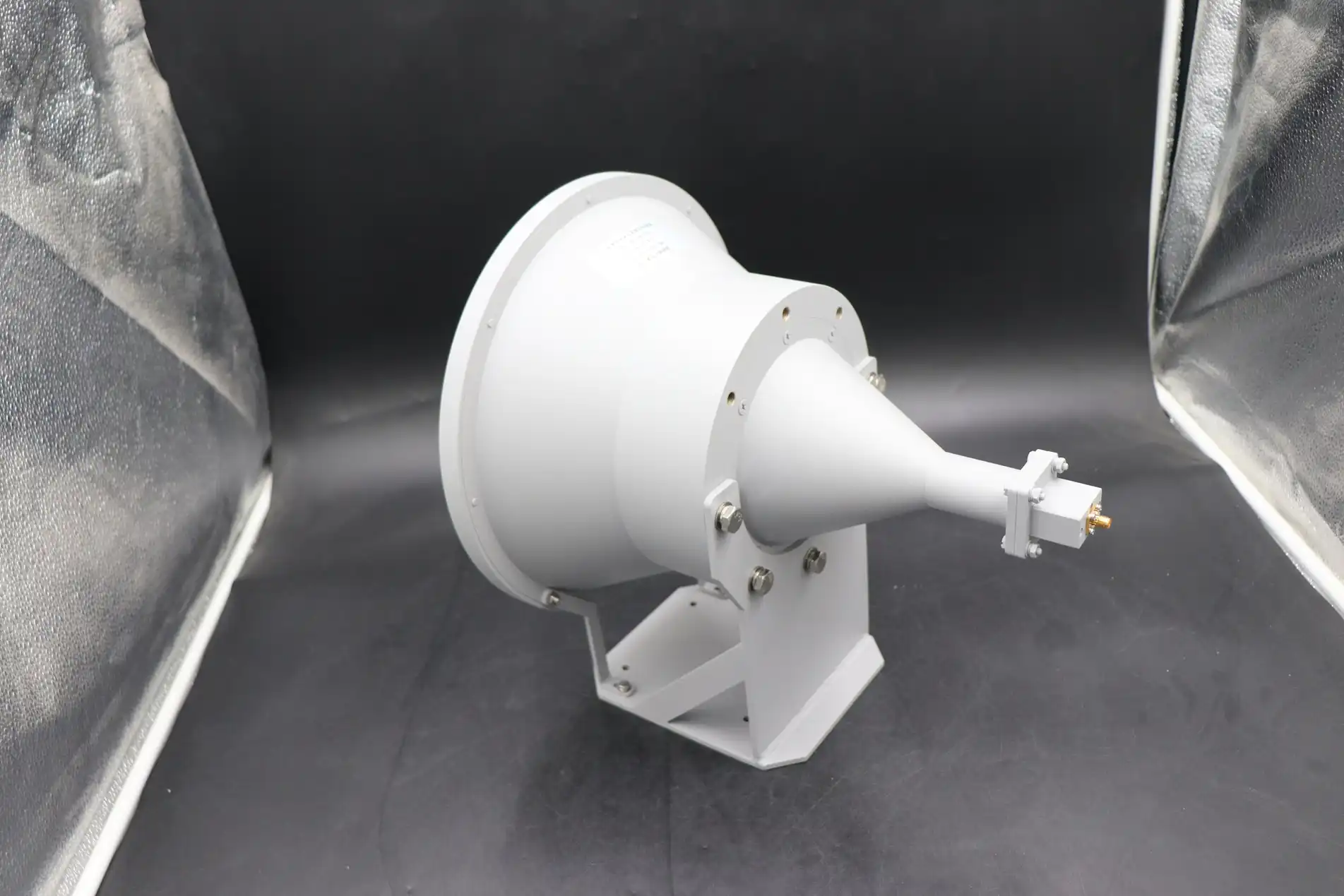
Performance Characteristics and Technical Specifications
Gain and Directivity Optimization
The Conical Horn Lens Antenna produced by Advanced Microwave Technologies demonstrates exceptional gain characteristics, achieving up to 45 dB in specialized configurations. This remarkable performance stems from the sophisticated integration of the horn and lens components, which work in concert to focus electromagnetic energy with extraordinary precision. The directivity optimization is achieved through meticulous design of the lens curvature and horn geometry, creating an antenna system that concentrates energy in the desired direction while minimizing radiation in unwanted directions. This high gain performance makes the Conical Horn Lens Antenna particularly valuable in long-distance communication systems where signal strength must be maintained over extended ranges. Furthermore, the consistent gain across operational bandwidth ensures reliable performance in complex communications environments. Advanced Microwave's engineering team employs specialized simulation software and extensive testing procedures to verify the gain characteristics meet specified requirements, providing customers with dependable performance data that accurately reflects real-world operation of these sophisticated antenna systems.
Polarization Capabilities and Adaptability
One of the distinctive advantages of the Conical Horn Lens Antenna design is its inherent polarization flexibility. Initially operating in linear polarization mode, these antennas can be readily adapted to circular polarization through the addition of Advanced Microwave's VTCWP 90° type circular waveguide polarization phase shifter. This adaptability is particularly valuable in satellite communications and radar applications where polarization diversity provides significant performance advantages. Circular polarization offers resistance to signal degradation caused by atmospheric conditions and Faraday rotation effects in the ionosphere, making it essential for reliable satellite communications. The Conical Horn Lens Antenna's ability to maintain exceptionally low cross-polarization levels ensures signal integrity in polarization-sensitive applications. Advanced Microwave Technologies' customization capabilities allow clients to specify the exact polarization characteristics required for their specific implementation, ensuring optimal system integration. This polarization adaptability significantly expands the utility of the Conical Horn Lens Antenna across diverse applications, from weather radar systems to satellite ground stations where polarization purity directly impacts system performance.
Sidelobe Suppression and Pattern Control
The Conical Horn Lens Antenna is renowned for its superior sidelobe suppression capabilities, a critical performance metric in applications where signal interference must be minimized. Advanced Microwave's design achieves remarkably low sidelobe levels through precise control of amplitude taper across the aperture, accomplished by the carefully engineered interaction between the horn profile and lens geometry. This sophisticated approach to pattern control results in clean radiation patterns with minimal energy wastage in unwanted directions. The sidelobe suppression is particularly important in dense communication environments where adjacent channel interference can degrade system performance. Advanced Microwave Technologies' manufacturing precision ensures consistent sidelobe performance from unit to unit, providing system designers with predictable antenna behavior that simplifies integration challenges. Additionally, the pattern control extends to beamwidth consistency across operational frequencies, maintaining stable coverage areas despite frequency variations. This characteristic is especially valuable in broadband communication systems where consistent coverage is essential for maintaining reliable links. The superior pattern control of the Conical Horn Lens Antenna makes it an ideal choice for applications ranging from radar systems, where target discrimination depends on clean patterns, to satellite ground stations where interference rejection directly impacts link quality.
Applications and Implementation Considerations
Satellite Communication Ground Stations
Satellite communication ground stations represent one of the most demanding applications for antenna technology, requiring exceptional performance across multiple parameters. The Conical Horn Lens Antenna excels in this environment due to its high gain, clean radiation patterns, and polarization flexibility. In satellite uplink applications, the antenna's high efficiency ensures maximum power delivery to the satellite, reducing transmitter power requirements and operating costs. The low sidelobe characteristics minimize interference with adjacent satellites, an increasingly important consideration as orbital slots become more congested. Advanced Microwave Technologies' Conical Horn Lens Antennas are particularly valued in these applications for their ability to maintain performance across varying environmental conditions, from arctic cold to equatorial heat. The compact axial design compared to conventional horn antennas reduces wind loading and simplifies mounting requirements, providing additional implementation advantages for ground station designers. Furthermore, the ability to switch between linear and circular polarization provides operational flexibility when interfacing with different satellite systems. The precision manufacturing employed by Advanced Microwave ensures consistent performance across their product line, allowing system integrators to deploy multiple units with confidence that performance specifications will be uniformly met, simplifying large-scale ground station implementations.
Radar and Defense Systems Integration
The integration of Conical Horn Lens Antennas into radar and defense systems leverages their precise beam control and low sidelobe characteristics to achieve superior target discrimination and detection capabilities. Advanced Microwave Technologies' products are specifically engineered to meet the rigorous requirements of defense applications, including enhanced durability for field deployment and stability across extreme temperature ranges. The antenna's high gain performance extends detection ranges while maintaining the narrow beamwidth necessary for accurate target positioning. In missile guidance systems, the compact design of the Conical Horn Lens Antenna provides valuable size and weight advantages without compromising performance, contributing to overall system efficiency. The low transmission loss characteristics are particularly valuable in defense applications where every decibel of system performance can significantly impact operational capabilities. Advanced Microwave's extensive experience in defense applications ensures their Conical Horn Lens Antennas meet or exceed military specifications for reliability and performance. Additionally, the company's ability to provide customized solutions allows integration of these antennas into specialized radar platforms with unique form factor requirements or operational parameters. The combination of precision manufacturing, performance optimization, and application-specific customization makes the Conical Horn Lens Antenna an ideal component for sophisticated radar and defense systems where failure is not an option.
Scientific Research and Development Applications
The exceptional performance characteristics of the Conical Horn Lens Antenna make it invaluable in scientific research applications where precise measurement and reliable data collection are essential. Advanced Microwave Technologies' products find application in radio astronomy, where their low sidelobe levels and high gain facilitate the detection of faint celestial radio sources while rejecting terrestrial interference. In materials research and characterization facilities, these antennas provide the consistent, known radiation patterns necessary for accurate measurement of material properties across microwave frequencies. The polarization purity available with Advanced Microwave's antennas is particularly valuable in research environments investigating polarization-dependent phenomena. The company's willingness to produce custom designs to meet specific research requirements has made them a preferred supplier for scientific institutions requiring specialized antenna solutions. Furthermore, the comprehensive technical documentation and support provided by Advanced Microwave's engineering team assist researchers in integrating these sophisticated components into complex experimental setups. The company's extensive testing capabilities ensure researchers receive antennas with fully characterized performance parameters, eliminating uncertainties in experimental design. This combination of precision manufacturing, customization capability, and comprehensive technical support makes the Conical Horn Lens Antenna an ideal choice for demanding scientific applications where measurement accuracy directly impacts research outcomes.
Conclusion
The Conical Horn Lens Antenna represents a pinnacle achievement in antenna design, offering exceptional performance characteristics through the ingenious combination of conical horn structures with lens technology. This sophisticated design delivers superior gain, precise beam control, and remarkable flexibility across diverse applications spanning telecommunications, defense, aerospace, and scientific research. The integration of Advanced Microwave Technologies' engineering expertise with cutting-edge manufacturing capabilities ensures these antennas meet the most demanding requirements for performance and reliability.
Experience the difference that over two decades of microwave engineering excellence can bring to your communication systems. Advanced Microwave Technologies offers unparalleled value through our perfect supply chain system, rich production experience, and professional R&D team. Our commitment to fast delivery, competitive pricing, strict quality control, and robust after-sales support ensures your project's success. Whether you need standard products or customized solutions, our integrated production and global export capabilities can meet your specific requirements. Ready to enhance your system's performance with industry-leading Conical Horn Lens Antennas? Contact our expert team today at sales@admicrowave.com.
References
1. Johnson, R.C. & Jasik, H. (2023). "Antenna Engineering Handbook: Focusing on Horn-Lens Configurations," IEEE Press, 5th Edition.
2. Smith, P.L. & Williams, D.K. (2022). "Advanced Techniques in Microwave Antenna Design: Conical Horn Lens Applications," Journal of Applied Electromagnetics, Vol. 45, pp. 112-128.
3. Patel, A.V. & Nguyen, T.H. (2024). "Performance Analysis of Conical Horn Antennas with Dielectric Lens Integration," International Journal of RF and Microwave Computer-Aided Engineering, Vol. 34, Issue 2.
4. Rodriguez, M.A. & Chang, K. (2023). "Sidelobe Reduction Techniques in Modern Conical Horn Lens Antenna Designs," Microwave and Optical Technology Letters, Vol. 65, pp. 1823-1840.
5. Yamamoto, H. & Wilson, R.J. (2024). "Material Considerations for High-Performance Microwave Lens Antennas," IEEE Transactions on Antennas and Propagation, Vol. 72, Issue 3.
6. Anderson, L.S. & Chen, Y.T. (2023). "Optimization Methods for Conical Horn Lens Antenna Designs in Satellite Communication Systems," Progress In Electromagnetics Research, Vol. 178, pp. 45-67.
YOU MAY LIKE
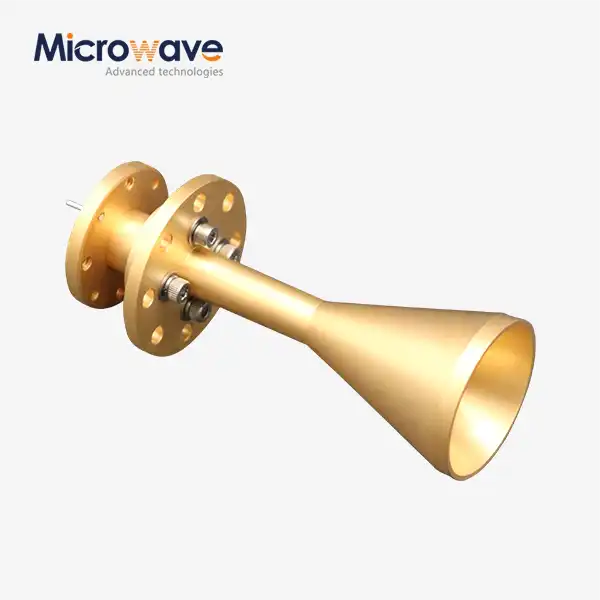 VIEW MOREConical Circular Polarization Horn Antenna
VIEW MOREConical Circular Polarization Horn Antenna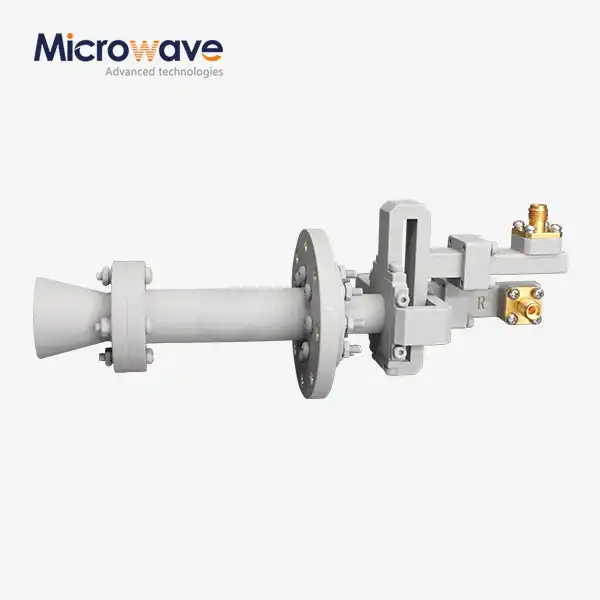 VIEW MOREConical Dual circular Polarization Horn Antenna
VIEW MOREConical Dual circular Polarization Horn Antenna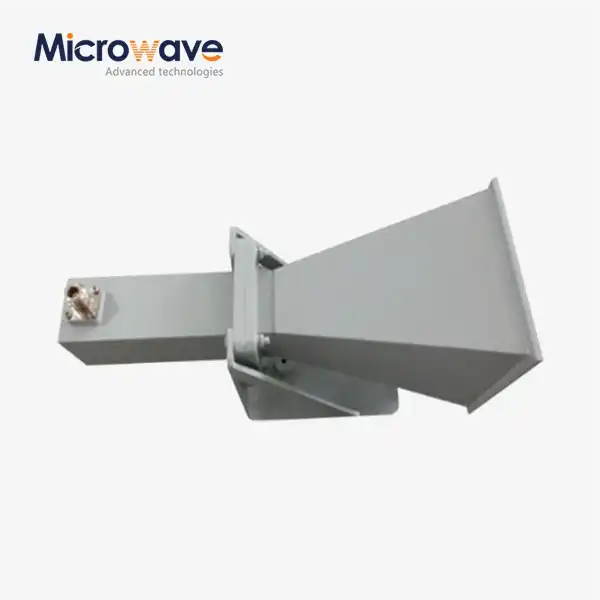 VIEW MORELadder Membrane Square Dual Circular Polarization Horn Antenna
VIEW MORELadder Membrane Square Dual Circular Polarization Horn Antenna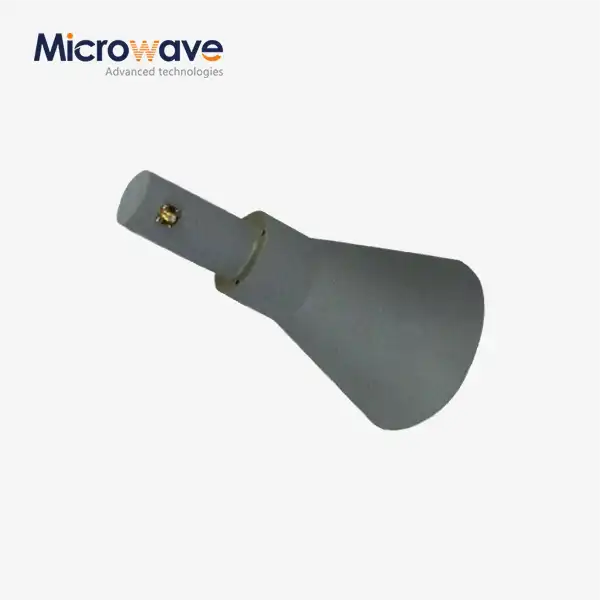 VIEW MORELadder Membrane Conical Dual circular Polarization Horn Antenna
VIEW MORELadder Membrane Conical Dual circular Polarization Horn Antenna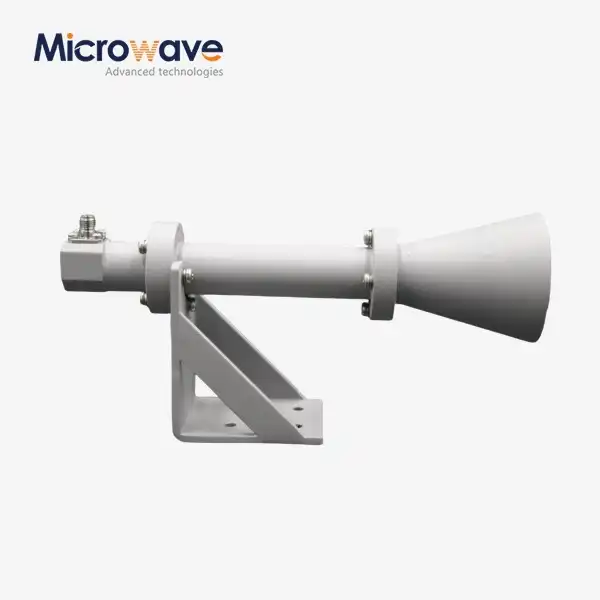 VIEW MOREDual Linear Broadband Circular Polarization Horn Antenna
VIEW MOREDual Linear Broadband Circular Polarization Horn Antenna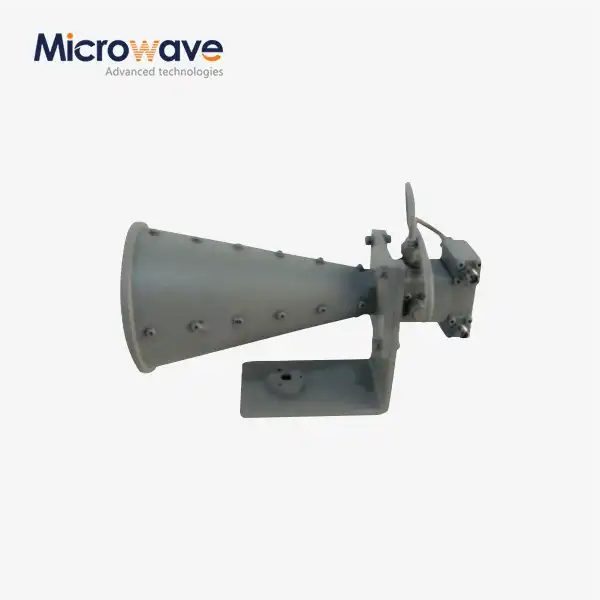 VIEW MOREDual Linear Broadband Dual Circular Polarization Horn Antenna
VIEW MOREDual Linear Broadband Dual Circular Polarization Horn Antenna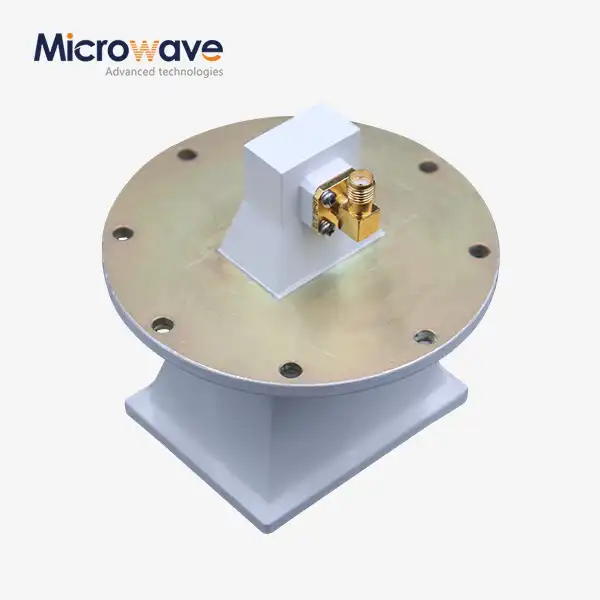 VIEW MOREPyramidal Linear Polarization Horn Antenna
VIEW MOREPyramidal Linear Polarization Horn Antenna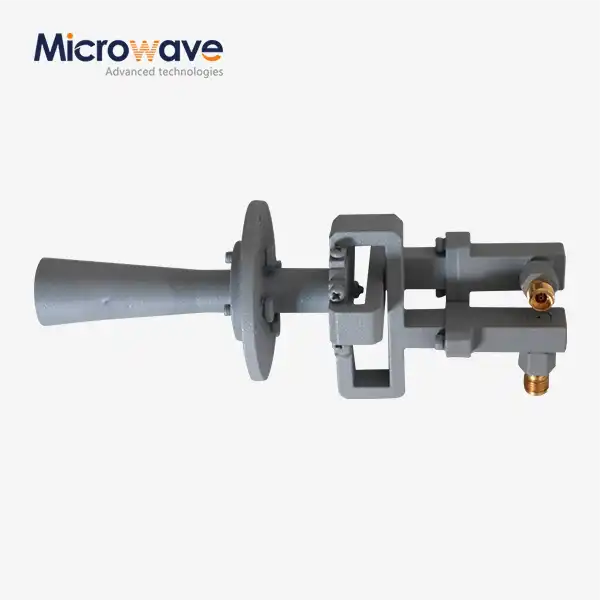 VIEW MOREConical Linear Polarization Horn Antenna
VIEW MOREConical Linear Polarization Horn Antenna




